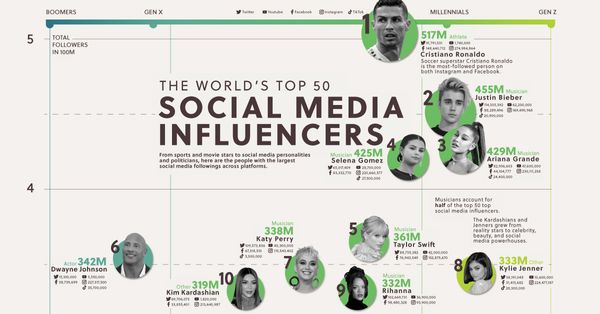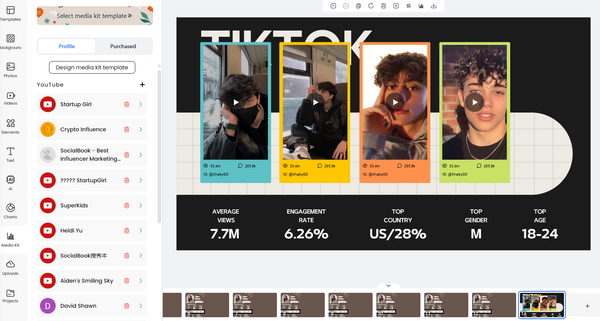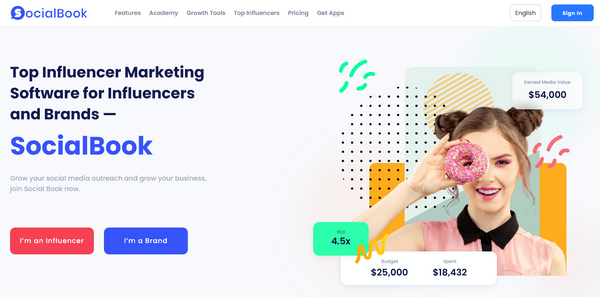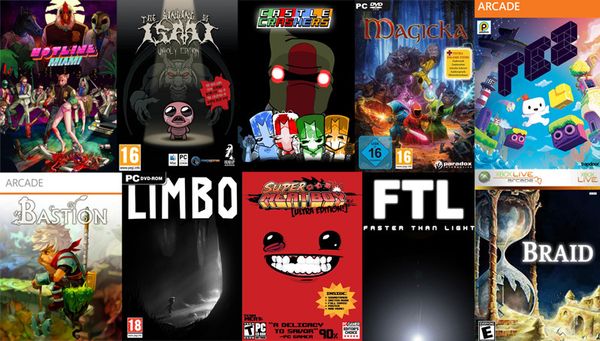Scroll through Instagram, TikTok, or YouTube, and the pattern is clear: feeds aren’t dominated by polished brand ads anymore. Instead, authentic user-generated content (UGC) is driving engagement, discovery, and loyalty. Research shows consumers are 2.4 times more likely to trust UGC than traditional ads, with nearly 80% admitting it heavily influences what they buy. In today’s trust-driven economy, UGC has become the gold rush of modern marketing.
But like any gold rush, striking it rich isn’t simple. Brands often struggle with messy processes—finding the right creators, ensuring brand alignment, and turning raw content into campaigns that convert. It’s a challenge not unlike picking the perfect gift for someone far away: you hope it fits, but there’s no guarantee.
This is where Artificial Intelligence enters the picture—not as a cold replacement, but as a powerful creative partner. AI is already transforming how brands approach UGC: identifying creators with genuine audience alignment, streamlining approvals, and providing real-time performance insights. What once felt chaotic is becoming efficient and scalable.
The future of marketing lies at the intersection of human creativity and AI precision. Together, they’re shaping UGC into not just a trend, but the cornerstone of brand growth.
The AI Advantage: From Discovery to Analysis
AI is no longer just a buzzword in the creator economy or social media marketing—it has become one of the most fundamental and powerful tools in the industry. More than anything, it now serves as the engine driving transformation: helping brands discover the right creators, launch impactful product campaigns, boost sales, and, most importantly, measure impact.
And that word, impact, deserves the spotlight. Because at the end of the day, it’s not enough to simply run campaigns. You need to know what’s actually working, what’s resonating with your audience, and what’s moving the needle for your brand. This is where AI proves invaluable.
1. Hyper-Targeted Creator Discovery and Recruitment
The first challenge brands face in the UGC race is finding the right creators who truly reflect their values and connect with their audience. It’s not about chasing influencers with thousands, or even millions, of followers. What really matters is partnering with those who can genuinely influence the customer base you care about most. And this is exactly where AI proves its worth, making the discovery process smarter, faster, and far more precise.
Unlike manual surveys or endless scrolling to find the “right fit,” modern AI algorithms bring precision and speed to the process. These systems can scan millions of social profiles in seconds, identifying patterns and uncovering the factors that truly matter. Instead of focusing on superficial metrics like follower count, AI digs deeper to evaluate whether a creator’s profile is genuinely compatible with your brand.
AI helps to evaluate the factors that drive performance, such as:
- Followers Demographics: The complete data of followers, a complete database such as who is following whom, their age, gender, occupation, sector, category, and interests. For instance, nearly 70% of Gen Z consumers say they rely on influencers for purchase decisions, making it critical to know who those influencers reach.
- Brand Affinity: Understanding and resonating with influencers' views is extremely crucial while deciding on whether the influencer is suitable for your brand or not. Audiences can easily detect forced partnerships, which is why 92% of consumers say authenticity is key when deciding which brands they support.
- Aesthetics: The next most important thing to analyze where AI can assist you is whether the style, visual style, and storytelling of the brand match your requirements or not. It is essential to find the element of consistency to protect your brand’s identity.
- Engagement Rate Authenticity: In today’s social media landscape, authenticity is rare and even harder for brands to verify. Determining whether a reel, share, comment, or follower is genuine can be a daunting task. This is where AI proves invaluable.
- Fake Followers Checks: These checks aren’t just important, they’re essential. With studies estimating that up to 20% of influencer followers are fake, AI-powered tools can flag suspicious patterns, highlight authentic engagement, and ensure that every collaboration is built on real influence, not vanity numbers.
- Past Campaign Performance: It is crucial to analyze how the influencers have delivered in your past collaborations. The magic of AI is capable of analyzing things like benchmarking click-through rates, conversions, and audience retention to predict likely success.
2. Predictive Performance and Trend Analysis
Recruitment is just the beginning; AI has so much more to offer. By crunching past performance data and analyzing real-time social media trends, AI can actually predict sales trajectories, engagement outcomes, and campaign success before you even hit publish. Think of it as having a backstage pass to your audience’s next move.
Here’s what AI’s predictive magic can deliver:
- Suggest the best content format for your brand
Should you double down on TikTok? Drop a Reel? Or stick with a carousel post? AI doesn’t just guess, it predicts which format will maximize engagement, revenue, or brand lift based on real-time audience behavior. - Forecast campaign outcomes with confidence
From expected reach to potential ROI, AI helps brands know what to expect before the campaign even launches. - Fine-tune strategies for long-term impact
Instead of chasing quick wins, AI highlights which actions actually build sustainable brand growth. - Spot viral trends before they become nothing.
AI helps you to hop on the current trends quickly before they vanish away, since it is useless to be a part of them when the internet storm has already passed. AI tools can track hashtags, keywords, and engagement spikes to help you hop on the trend train before it leaves the station.
There is an interesting fact which is awe-striking. According to Influencer Marketing Hub, 63% of marketers plan to use AI to improve influencer campaign targeting and ROI in 2024. This shows that predictive marketing using AI is not just a thought, but it has become a standard.
Scaling Quality and Personalization with AI
With growing UGC campaigns, one of the biggest challenges faced by brands is scaling without sacrificing the brand’s authenticity and image. This is the biggest pitfall, but don't worry, this is where AI steps up its game.
Scaling quality and personalization with AI means being able to expand UGC campaigns to hundreds or even thousands of creators without losing authenticity, brand consistency, or the personal touch that makes content resonate. Let us discuss some real-life examples that have actually been benefiting their brand structures using AI.
- Sephora: Sephora uses AI assistants to scrutinize the available beauty influencers to find the best one for their marketing campaigns. The AI uses the past campaign data to create personalized product griefs for the creators.
- Airbnb: Airbnb also uses its personalized AI systems for recommendations, finding the best stay options for its customers according to their preferences and demands. Instead of blasting generic content, Airbnb uses AI to personalize messaging based on local culture and user interests.
1. Automated Campaign Management and Outreach
Reaching out to dozens or hundreds of creators is often overwhelming for the marketing teams, and then on top of that, deciding which one is the best is a separate task that puts them under great stress. But the good news is that AI-powered tools can streamline the entire process to make it smooth and easy.
- Automating Initial Outreach: AI can send personalized outreach messages that feel genuinely human, rather than like templated mass emails. This not only saves time but also boosts overall productivity.
- Personalizing Pitches: By using the audience data and past marketing campaigns, AI helps to customize each message to show creators why and how these collaborations are beneficial for them.
- Managing Contracts and Negotiations: There are AI tools that have taken over daily monotonous and time-consuming tasks such as drafting, reviewing, and even managing standard influencer agreements.
- Tracking Communication: No more digging through emails is required. You can keep all the conversations using one dashboard using the AI tools.
2. Intelligent Content Briefing and Guidance
One of the most crucial aspects of UGC is keeping the content on track, which means in accordance with the brand ideology, without killing the creator's voice. This can be solved using AI’s powerful dynamic content briefing. This is extremely important to keep a balance between too much control and keeping the creator’s voice.
Here’s how AI content briefing works:
- Analyzing Brand Guidelines: AI is capable of reviewing tones, colors, messaging pillars, mandatory disclaimers, hashtags, and trends. No matter who creates the content how the content is created, the brand identity remains intact.
- Incorporates Past Performances: AI is capable of analyzing trends and making decisions. It studies historically how past content has resonated with customers and audiences. (Was it short-form Reels? Long-form reviews? Tutorials? This ensures new briefs build on proven success instead of starting from scratch.
- Adapting to Current Trends: Whether it is a trending TikTok or a viral trend, a new Instagram feature, or a meme format, AI keeps real-time trends in content briefing to make it fresh and interesting.
3. AI-Powered Content Moderation and Right Management
If UGC is a gold rush, then quality control and right management are the gates that keep that gold from flooding in. The content piles up, but delays in reviewing, approving, or securing rights keep it from ever going live. In fact, a GlobalData report found that nearly 30% of UGC never gets published because of compliance or rights issues. That’s a lot of wasted creativity (and wasted ad spend).
Here is how AI can help you in this regard:
- Automatic Content Screening: AI tools can help to scan UGC instantly, indicating anything low-quality, off-track, or unsafe, such as blurry videos or inappropriate references.
- Guidelines Adherence Check: Did the creator forget to add #ad or #sponsored? AI can catch these slip-ups before they turn into regulatory headaches.
- Right Management: The AI system is capable of generating automated licensing agreements without the hassle of manually filling in the details. This helps to save time and improve overall productivity.
The best part? Instead of playing “content cop,” brands can focus on strategy while AI quietly ensures that everything is compliant, high-quality, and ready to publish.
Measuring what Matters: AI-driven Analytics
Let’s be straightforward, likes, shares, and followers look very cool on dashboards, but they don’t essentially pay the bills. The things that are crucially important are whether your UGC campaign is capable of driving real revenue, driving traffic, and generating actual conversions. This is where AI-powered analytics comes in to turn vanity metrics into real business insights.
1. Deep ROI Measurement and Attribution
Measuring ROI isn’t just important; it’s the backbone of modern marketing. Brands pour millions into campaigns, yet the burning question always remains: “Did this campaign just rack up 100,000 likes, or did it actually drive revenue?” Too often, the answer is disappointing. Budgets get swallowed by flashy ads that spark buzz but don’t translate into sales, leaving marketers chasing vanity metrics instead of business growth.
This is where AI finally cracks the code. With advanced attribution models, AI moves past surface-level engagement and uncovers the real impact of UGC campaigns. Here’s what it can do:
- Track the entire customer journey – from watching an Instagram Reel to clicking “Shop Now” and completing checkout.
- Connect content performance with business outcomes – tying engagement directly to conversion rates, sales lift, and even customer lifetime value.
- Differentiate popularity from profitability – showing which content truly drives revenue, not just attention.
Stat to note: According to Nielsen, campaigns using advanced attribution models improve ROI accuracy by up to 70% compared to traditional reporting. That’s the difference between guessing your impact and knowing it with confidence. AI helps to measure direct revenue tied back to UGC.
2. Sentiment Analysis and Consumer Insight
Numbers alone can’t tell the whole story; it’s the emotions behind them that reveal what’s really happening. A post might rack up thousands of likes, but what if the comments are full of complaints? That’s a very different story. So, how do you read between the lines when you can’t sit face-to-face with every customer? Enter the magic of AI-powered sentiment analysis.
Advanced AI tools such as Natural Language Processing and Sentiment Analysis can help to scan the comment sections, reviews, and reactions at scale, detecting whether people are feeling:
- Positive (love, excitement, trust)
- Negative (frustration, disappointment)
- Neutral or mixed (curiosity, confusion)
This helps to transform the raw feedback into useful consumer insights that brands can actually act on in real-time by taking the relevant actions. Whether that means tweaking product features, clarifying messaging, or doubling down on what’s working.
Implementing AI in Your UGC Campaign
Now that we’ve covered the theory of how effective the touch of AI can be to your UGC campaign, let’s get down to business - the practical implementation. Although AI may seem like a quick shortcut to achieving your ideal results, the truth is that you really need to do your research if you want the best results. You can’t just solely rely on Chat GPT to row your campaign’s boat; you’ve got to grab the oars yourself as well!
For the practical implementation of AI to your UGC campaign, there are only 4 simple steps to follow that can seal your deal with AI.
1. Define your UGC Campaign Goals
To make your UGC campaign a shining success, you need to dive into your campaign’s goals. You need to revisit your brand’s core values and ensure that your campaign aligns with them. Figure out what you aim to strive for with your campaign, be it brand awareness or sales conversions. Once you know what the actual target of your campaign is, you can start planning a UGC campaign that is bound to be a mega success!
2. Audit your Current Process
In order to get to your destination, you need to know where you currently stand and that is why internal audits are important. Take a comprehensive overview of what’s happening behind the curtains of your campaign. Highlight all the pain points - what’s going wrong and what can be improved. There are a number of reasons that can make your campaign go south, though at the time they may seem totally harmless. Some of them are listed below:
- Taking too long to find the ideal creators
- Using insufficient software
- Not clearly defining campaign goals
- Investing in the wrong tools
- Lack of alignment with trends
3. Do Your Research
Implementing AI is not all about blindly trusting an AI platform and ignoring the consequences. To truly get your dream results, you have to do your homework. You need to conduct comprehensive research on which platform best serves your needs. You cannot follow a one-size-fits-all strategy in this regard, as every campaign has its own audience and aims. You need to explore various influencer marketing platforms and choose the one that best fits your needs and budget.
4. Do a Pilot Campaign
Now that you have your campaign’s goals chalked out, pain points all figured out, and the right influencer marketing platform in hand, all that is left to do is to launch your UGC campaign. But wait! Launching a UGC campaign without beta testing is a mistake that you don't want to make. To achieve the perfect results, you first need to launch a pilot campaign, essentially a prototype to test its effectiveness.
Conclusion
When it comes to AI, a common misconception that exists is that it’s gonna take over human creativity; however, the truth is the opposite. As you must have witnessed from this article, AI is here to assist, not to assassinate. AI exists to streamline your workflows by taking care of big data chunks and filtering them out for you. A synergy exists between AI execution and human strategies, and the sooner you discover and acknowledge it, the better results you’ll see in your UGC campaign. Therefore, it goes without a doubt that brands and companies taking assistance from AI in their UGC campaigns are bound to gain a significant competitive edge in the market, and you can be one of them! For more information on which influencer marketing platform to use, visit SocialBook.
To Explore more influencer insight, check the link here: https://socialbook.io/blog/tag/influencer-marketing/







